Introduction: The Rise and Fall of FireWire
There is no standard in the rapidly evolving world of connectivity technology that has experienced as many rises and falls as FireWire. This revolutionary interface, which had been the best technology in the high-speed data transfer market, ultimately sank into obscurity until it was outperformed by the faster ESIO interface, proclaimed as the future of data transfer rate in professional audio and video production. Did you know that at some point, FireWire was faster and more reliable than USB? This forgotten hero of connection is well worth mentioning for its enormous contribution to the existing data transfer standards.
What Is FireWire?
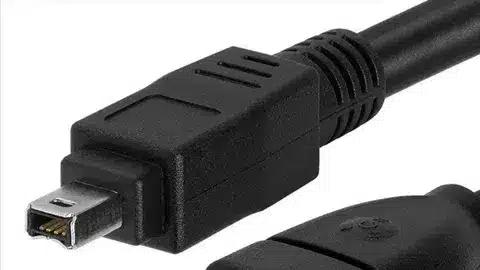
IEEE 1394, or FireWire, is a high-speed serial bus interface standard that is utilized to connect devices and to easily and efficiently transfer a vast amount of data. Initially, Apple developed FireWire in the late 80s and early 90s in response to the growing need to achieve higher data transfer rates between computers and external devices.
The marketing department at Apple gave the technology this name, but it is also referred to as i.LINK (used by Sony) and DV (Digital Video). FireWire was integrated into several kinds of devices almost immediately, including digital cameras and external hard drives, professional audio equipment, and video editing hardware.
Key Features of FireWire

High-Speed Data Transfer
The most glorified thing about FireWire was the fantastic transfer of data. FireWire 400 offered a speed of up to 400 Mbps, and the next FireWire 800 standard increased the frequency to 800 Mbps. Contextually, FireWire 400 was taking on USB 2.0 with its hypothetical ceiling of 480 Mbps when it came to data transmission. FireWire was always going to do better in the real-world setting due to its more efficient data transmission protocol.
Daisy-Chaining Capability
Unlike USB, where multiple devices were required to connect via a hub, up to 63 devices could be daisy-chained on a single bus using FireWire. This was a priceless attribute at the workplace where two or more storage devices, cameras, or sound interfaces needed to be linked without loss of capability.
Hot-Swappable
FireWire devices might be installed or uninstalled during the running operation of the computer without necessarily restarting the system or reinstalling device drivers. FireWire was also very convenient and simple to use in a dynamic work environment, thanks to this hot-swapping feature.
Isochronous Data Transfer
Probably, one of the technically more advanced features of FireWire was the ability of isochronous transfer of data. This capability ensured that the flow of data was not interrupted at any point in time since it made sure that bandwidth was distributed to applications that needed time. This left FireWire the most successful option in audio and video gadgets, where dropped frames or audio glitches could be catastrophic.
FireWire vs. USB: A Comparative Analysis
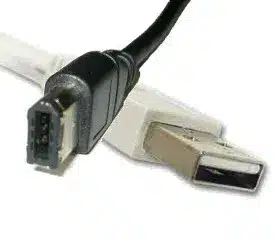
Speed and Performance
Although USB 2.0 was faster in theory, FireWire was always faster in practice. FireWire had more consistent transfer rates and, therefore, was the one that would be used when there is a need to transfer data at a high rate consistently. USB protocol overhead caused actual transfer rates that were usually much less than claimed specifications.
Device Compatibility
USB was popular because it supported an enormous number of devices, including keyboards and mice, printers, and storage devices. FireWire, nevertheless, established a niche in the professional and prosumer market, especially on devices with high bandwidth and low latency, including digital video cameras, audio interfaces, and external storage systems.
Industry Adoption
FireWire was also much preferred by professional audio and video industries due to its better performance attributes. In the meantime, the cheaper USB and its wider compatibility became the standard of consumer electronics as well as general computer peripherals.
FireWire in Audio and Video Production
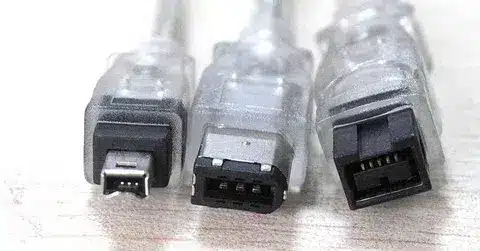
FireWire got associated with the professional production of audio and video. Manufacturers such as Focusrite, PreSonus, and MOTU based their audio interfaces on the low-latency, high-bandwidth benefits of FireWire to provide recording and playback with studio quality. The real-time nature of the technology, due to its isochronous data transfer capability, enabled the attainment of near-zero latency monitoring, which is critical in professional recording settings.
FireWire was also used in video production, allowing cameras to transfer DV (Digital Video) footage to editing systems without any issues. FireWire ports were long the default connection on professional video equipment, provided by Sony, Canon, and Panasonic cameras, among others. The continuity in data streams that the technology provided contributed to its inseparability in real-time video capture and editing processes.
The Decline of FireWire
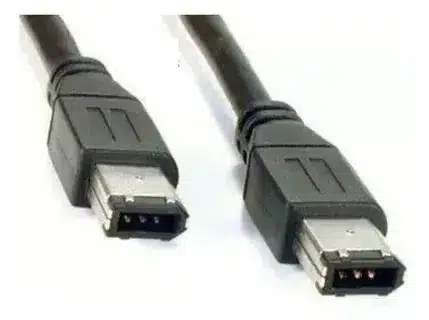
FireWire was not without a number of things that contributed to its ultimate downfall. The constantly changing aspect of USB, namely the introduction of USB 3.0, which has a top speed of 5 Gbps, could finally surpass the performance advantage of FireWire. On top of that, USB was cheaper to license and provided more to manufacturers due to its industry support.
The other huge hit was when Apple abandoned FireWire in favor of Thunderbolt technology. At the time when the pioneer of the technology began to move towards new standards, the industry was starting to crumble. Faster wireless connection speeds and cloud processes implied that many applications no longer needed high-speed wired connections.
Legacy and Modern-Day Relevance
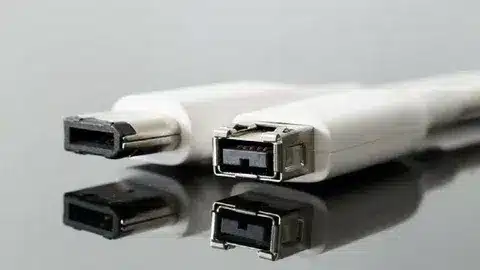
FireWire has played an important role nowadays in its irrelevant position despite being obsolete. Essentially all innovative capabilities of FireWire, such as the ability to hot-swap, guaranteed bandwidth allocation, and so on, are already present in current interfaces, such as USB-C and Thunderbolt.
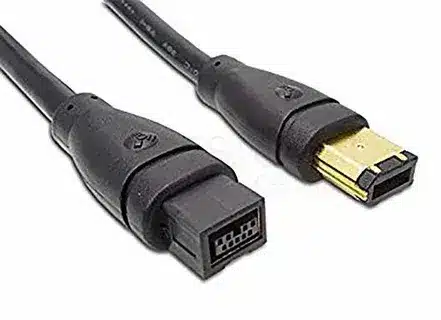
FireWire to USB adapters and FireWire-supported interface cards continue to be available to those professionals who continue to use legacy equipment, but with some performance drawbacks. Others still use old FireWire audio interfaces due to their reliability and sound quality.
Conclusion: Remembering FireWire
The story of FireWire as a revolutionary technology and a historical footnote has illustrated just how fast technological change is happening within the connection industry. Although no longer present in modern equipment, its work in high-speed data transfer, professional audio production, and video editing processes set out some contentious standards that still have an impact on the current connectivity solutions.
FireWire is a lesson that market forces, cost factors, and changing user requirements can supersede even the most promising technologies. To many who lived through the golden age of FireWire, it is a monument of engineering perfection and innovation in the quest to create a smooth connection.





